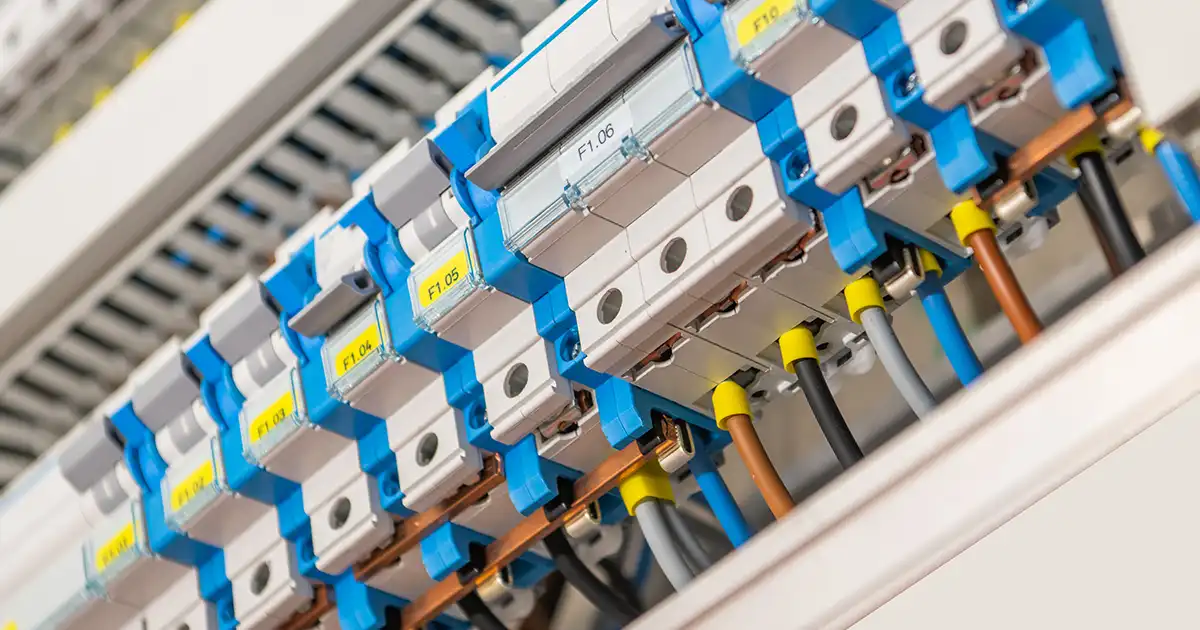Introduction:
Electric panels or the electric control panels are the backbone of the complex electrical arrangement of our homes, businesses, and factories that provide the electric power we need. One can easily conclude that the importance of electric panels grows with each passing day in India, where the speedy pace of urbanization and industrialization is marking a century. The blog teaches why electric panels are all about and even explores the risks that are associated with short circuits, strengths of circuit breakers which actually regulates electrical distribution in India.
The Anatomy of Electric Control Panels:
The electric panel is the most potent part that controls all the electric circuits. They are not shelves of books or even sandbags but it is pile of metal containers of different sizes, shelters to the things inside. The underlying reason behind commissioning those panels is to maintain a secure, convenient and accidentally short circuit prevention.
Understanding How Electrical Panels Work:
The operation of the electric panels should be understood comprehensively after all the components and their operations are captured. The main purpose of these panels is the protection of equipment these are, circuit breaker, which is the first in the line of defense against electrical overload and short circuit. Therein are located switches, control devices, and fuses for the smooth and efficient power consumption.
In India, the fact that electricity cuts and power board related failures are periodically experienced, the bigger capacity panels become even more of a necessity. Performing tion (lifting, consecutive, long-term (endurance, and power loads on the panels, etc.) are taken into consideration to achieve optimal balance of the supply. As well, we live in a modern age where electric panels incorporate fresh technologies for real time datalogging and sensory which allow for lightning quick issue identification and resolution.
The Menace of Short Circuiting:
Small-circuit malfunctions may be the main reason for losing balance in the power systems functioning. To give an easy definition of the short circuit, it is a situation when the unwanted connection between two points takes place in an electric circuit. This becomes possible as a result of an extremely sudden increase in current, with the following为重要后果, being the overheating, 火灾 and damage to the electrical equipment .
In the Indian context, overloading of the electric grid is not less diverse and therefore, the chance of the circuit breaker failure is higher. Electric panels are an important entity in risk reduction by making additive stabilizing measures such as circuit breakers and fuses among others. These devices function to cut off the flow of electricity in case of a short circuit. They will then block the power inflow, thereby protecting the systems against damage and smooth operation for the dwellers.
The Role of Circuit Breakers:
It happens to be circuit breakers that are the often unknown heroes of the electric panels. Through them machines in the system will cut the power supply to the circuit or the overload when they detect these instances. In India where fluctuation of power supply is over rated, circuit breakers check the fire occurring over the electric lines and protection of the equipment.
However, it should be mentioned that the breakers have several variants within which there are different types that serve different purposes. For example, simple circuit breakers (MCBs) are widely applied in residential operation normally, and should bigger plants need a high protection, these establishments adopt molded case circuit breakers (MCCBs) for their reliable performance.
Electrical Distribution in India:
The electric-distribution platform (nation-wide) of India is undergoing significant revolution, owing to the lack of prosperity in electrical needs for both the urban and rural pattern. The electric panels are playing the strategically important role of the electrical distribution networks backbone during this transformation process.
In regard to the city, energy consumption surges at the urban utilities’ presence which in turn forces the utilities to design electrical distribution systems with substations, transformers, and other electrical panels placed tactically. In underprivileged rural areas, where reliable electricity infrastructure is lacking in some localities, robust electrical panels act as key devices in closing the inequality gap and sustainably providing equitable distribution of electricity.
Conclusion:
Managing electrical panel in India is not just an electrical skill; it is the reason of our power supply became smooth and secure from that expertise. Along the way, we need to be aware of the significance of electric control panels, which is as they reduce the risk of short circuiting, the complexity of the electrical distribution system, and the attention given to circuit breakers, as they are critical to prevent damage to electrical equipment. We carry out this process through continuous education and proper guidelines usage in the process of the design and maintenance of electrical panels; this is to ensure the integrity of our national power grid.













